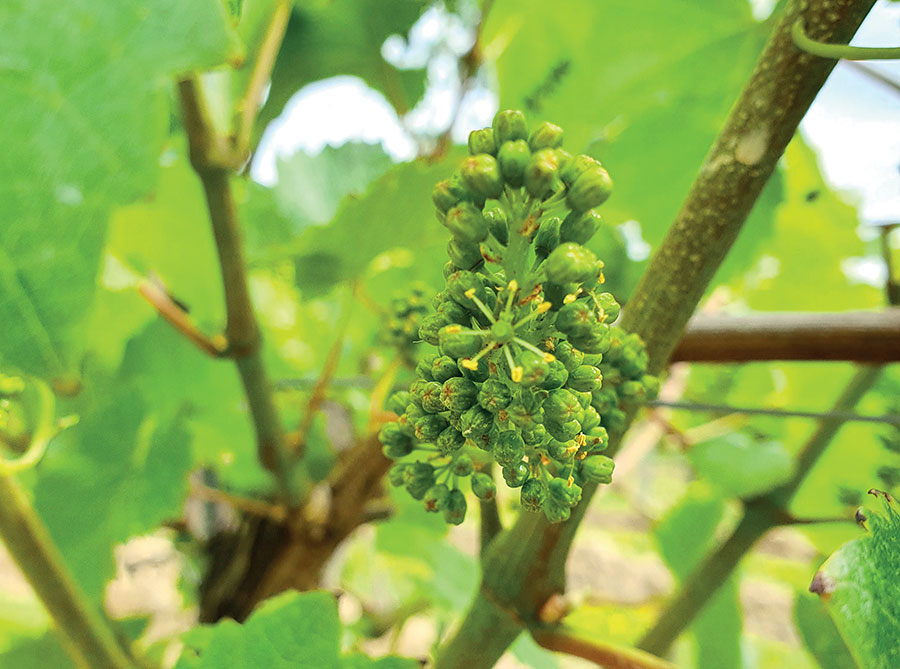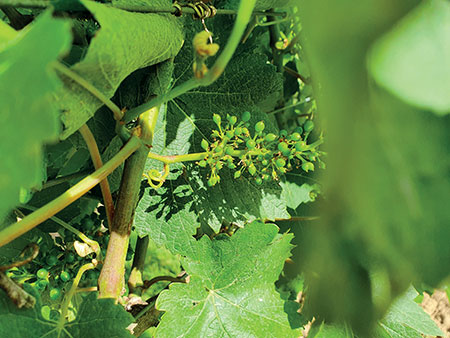Getting it right: Fruit thinning in vineyards
18th June 2024
VineWorks business director and acting head of vineyard services, Chris Buckley, gives Fruit & Vine readers his expert advice on the importance of fruit thinning.

Fruit thinning is an important exercise for managing crop load to achieve yield and quality parameter goals. This practice allows the vineyard manager to alter the ratio between fruit and vegetative growth (vine balance) which is particularly important in our cool climate where growing degree days (GDD) can be limited and ripening fruit in a UK autumn is most certainly a challenge.
Predicting yield
How much should you remove? Or should you remove anything at all? Those are the key questions. Before any potential crop is removed, it is important to accurately define what you have out in the vineyard in terms of potential crop. This is preferably done through early season counts of inflorescences (flowers). This should be done the earlier the better, as leaving fruit thinning to later in the season limits the impact the exercise will have upon fruit quality.
Use a reliable and accurate yield estimation method like this:
Diligently count large enough samples of inflorescences (flowers) – typically 30 per variety/clone (or block) – in a manner to avoid bias, making sure that you count those vines that have no fruit as well as those that do. Doing this thoroughly provides you with an accurate estimated average number of bunches
The next step is to establish an estimated bunch weight. Either use bunch weights (at harvest) from previous years, or a standard industry estimate. Multiply this average bunch weight by the number of bunches and the number of vines to calculate predicted yield.
How much to remove?
In short, it depends. Armed with the numbers, the adjustment to be made – if any – will depend upon several factors, such as the growing season thus far, variety/rootstock, vigour of the vine, target parameters and the minimum/maximum quantities as per a grower contract (if applicable).
Timing
Fruit thinning will have the greatest impact in areas where vines are deemed to be carrying a high crop load. By removing a portion of the fruit, we alter the ratio of leaves generating energy and supplying nutrients and the fruit in receipt of it, improving the overall fruit quality.

The timing of fruit thinning is closely linked to the impact upon the final fruit parameters. It can be done at any time during the season when flowers are visible, but done at an early stage, such as shortly after fruit set, will have the greatest impact as the vine’s resources are then directed into the remaining fruit for a longer period. It is, however, a longer and slower task as the bunches are not that obvious as small green berries blend in perfectly with the other foliage. To make this task easier, it is recommended that this should be done shortly after the first leaf stripping pass.
Done at a later stage, thinning at veraison or shortly after, is likely to have a minimal impact as the remaining fruit has a shorter period of time in receipt of the vine’s increased resources, at a period which is likely to have cooler days/nights and lower sunlight hours. However, the task is easier as the fruit is now easily visible. Bunches are larger and will have also started to change colour and identifying those that have not changed or are significantly lagging in development is easier.
About our experts
VineWorks has been establishing and supporting UK vineyards since 2006. With over 4.5 million vines planted, 300 vineyards established and thousands of tonnes of grapes hand-harvested, our expertise comes from experience. Visit the VineWorks website for more information.
Read more vine news
Read more fruit news
